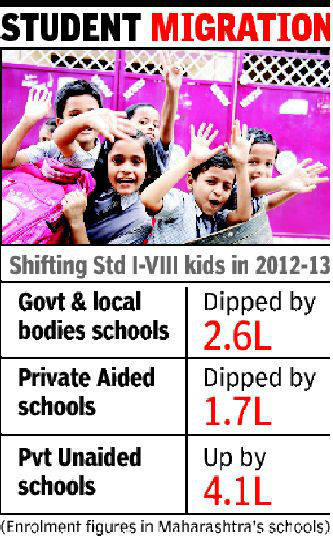There is also a belief that only private and unaided English-medium schools offer good quality education, which is not true in many cases, he added. "Parents also believe that schools charging more money will offer quality education," said the former state project director for Sarva Shikshan Abhiyan.
Basanti Roy, former secretary of the Mumbai divisional board office for secondary and higher secondary education, attributes the shift to the quality of education offered in private and unaided schools and also to the affordability of parents. "Even those parents who are not economically well off, aspire to send their children to private schools. They believe their children should get the best of the education. Saving for the future is not their only priority now," said Roy.
She added that accessibility to private schools also has increased, even in rural areas. "There are private schools who are now offering bus services for students' convenience in remote areas," she added.
The state's school education director, Sarjerao Jadhav, refused to comment on the dip in numbers in government and local bodies' schools, saying he has not seen the data. But he claimed there could be discrepancies as some schools do not fill the data properly.
While parents' preference for private unaided schools is one of the major reasons behind the increase in enrolment figures in these schools, SC Kedia, honorary secretary of the Unaided School's Forum, believed implementation of the Right to Education Act could have shifted some students from aided schools to unaided ones.
"Under the Act, free and compulsory
primary education should be made available to students. There is a
reservation of 25% for children from the economically and socially
weaker sections of the society, which could be one of the reasons for
the shift," said Kedia.
 MUMBAI:
Around 4.1 lakh students were added to the enrollment figures at private
unaided schools in the state in 2012-13. In the same period, schools run
by government/local bodies and even private-aided ones saw a dip in
enrollment by 2.6 lakh and 1.7 lakh respectively.
MUMBAI:
Around 4.1 lakh students were added to the enrollment figures at private
unaided schools in the state in 2012-13. In the same period, schools run
by government/local bodies and even private-aided ones saw a dip in
enrollment by 2.6 lakh and 1.7 lakh respectively.